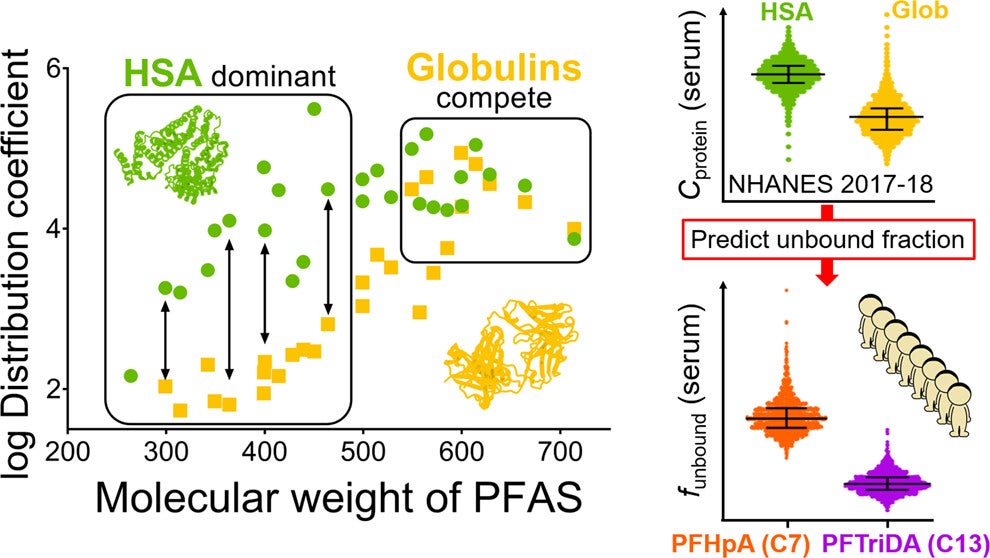PFAS binds to blood serum proteins (human serum albumin [HSA] and globulins) and impacts protein accumulation, circulatory distribution, and elimination. The unbound fraction of PFAS is typically more available for transport to organs, untouchable by biomolecules involved in transformation and elimination processes, and thus recirculated in the bloodstream for longer periods of time and more likely to elicit toxic effects. Binding of diverse PFAS to proteins and absorption, distribution, metabolism, and excretion in the human body are poorly understood. In a recent study, STEEP researchers investigated the competitive binding of PFAS to two major proteins and the dynamics of unbound PFAS in the human body.
To understand binding, researchers evaluated the distribution of PFAS to human serum albumin (HSA) and γ-globulin (the most abundant protein within the class of globulins in human serum), as well as bovine serum albumin (BSA) because it is often used as a proxy for HSA. Results demonstrated that PFAS with a molecular chain-length of less than seven were highly bound to HSA relative to globulins, whereas PFAS with a chain-length equal to seven or longer tended to bind to globulins.
Researchers also evaluated whether PFAS distribution to HSA and globulins is a reasonable predictor for the unbound fraction of PFAS in serum by comparing results to serum–water distribution concentrations, and results suggest that the method is suitable for predicting the unbound fraction of PFAS in human serum.
Research demonstrates the relationship between PFAS exposure and blood protein concentrations and may further develop understanding of PFAS. Data reported will be useful for modeling underlying accumulation, elimination, and toxicity of PFAS.
Fischer, F.C., Ludtke, S., Thackray, C., Pickard, H.M., Haque, F., Dassuncao, C., Endo, S., Schaider, L., and Sunderland, E.M. 2024. Binding of Per- and Polyfluoroalkyl Substances (PFAS) to Serum Proteins: Implications for Toxicokinetics in Humans. Environmental Science & Technology 2024 58 (2), 1055-1063. [DOI: 10.1021/acs.est.3c07415]

